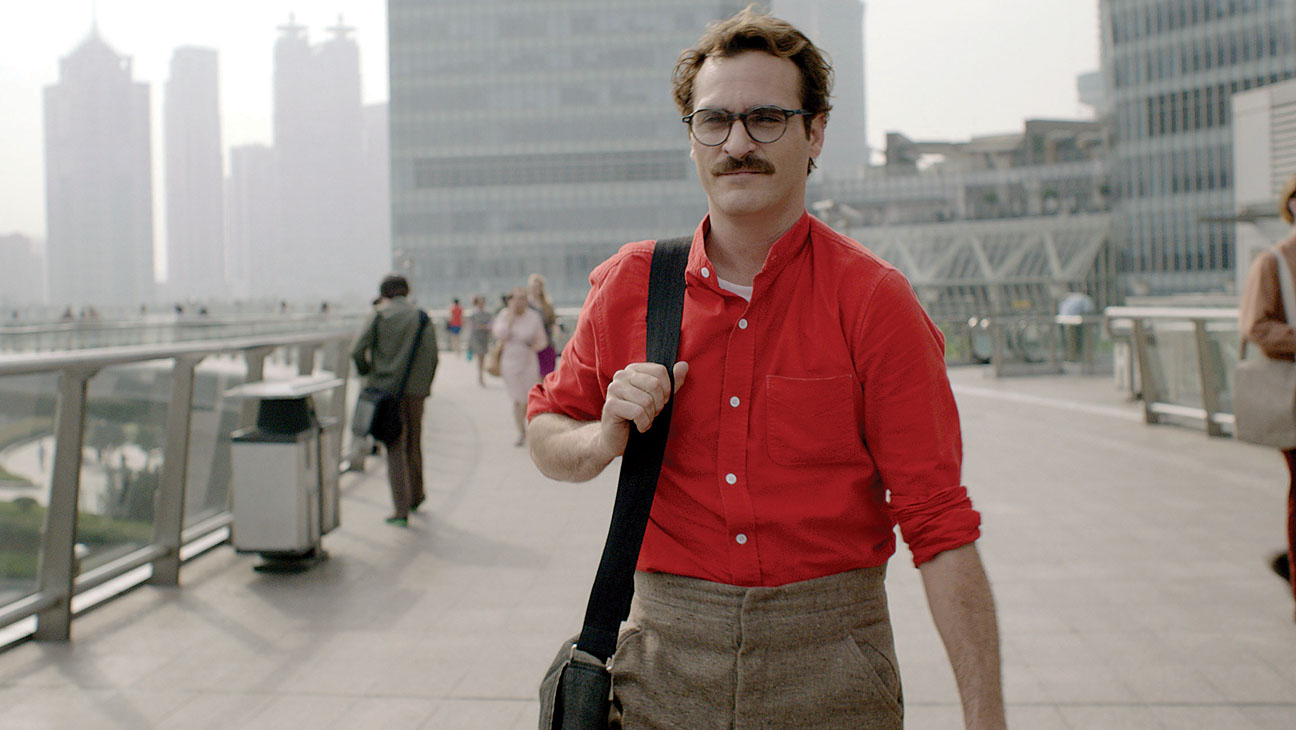For my Formal Film Studies project, I thought it might be cool to watch the development of a specific genre over time--and what better genre than noir to do this, considering its style is applied in so many places we don't even realize. Little did I know that, about two weeks after I chose my (what I thought was unique) are of study concerning the films
The Maltese Falcon,
Blade Runner, and
Brick, that we would be doing a very similar unit on noir films that included watching two of these movies in class. Nevertheless, I stuck to my assignment and even used some of what we did in class to help out with this.
 |
The Maltese Falcon (1941)
Director: John Huston
Starring Humphrey Bogart
Mary Astor, Peter Lorre
Watch trailer here |
The first movie I decided to watch was the supposed basis of all American noir,
John Huston's 1941
The Maltese Falcon starring Humphrey Bogart and Mary Astor. This movie follows the story of private investigator Sam Spade (Bogart) solving the mystery of who killed his partner Miles Archer and tracking down the fabled, priceless "Maltese Falcon." It has all the suspense and twists of any mystery movie, but with a special style innovative to the early '40s: the beginnings of noir.

The noir components are very strongly evident in this movie, and are the basis to which I compare the next two movies I watched. A major component of this is the protagonist of the movie: the "anti-hero"--the main character, in this case being Bogart's Spade, who although is the hero of the plot, in reality doesn't possess traditional hero-like qualities and is often morally questionable and shady. Spade shows this quality perfectly. He's a lone wolf, he doesn't play by the rules or the law, going against the police the whole movie in order to solve the mystery himself, and only at the end abiding with them to put the criminal in their place.
*SPOILERS*:
 |
| Femme Fatale Brigid O'Shaughnessy, played by Mary Astor |
Another huge part of the noir experience is the "femme fatale," the beautiful seductress female lead who in the end proves not to be trusted: in this case, it was Brigid O'Shaughnessy, who Spade inevitably falls in love with although she ends up being the true villain and murderer of his partner (as well as Floyd Thirsby). And as for the stylistic aspects of noir film, this movie was filled with them. The black and white, the shadowy set design, the portrayal of Bogart as mysterious, shady, smokey--it was all very chic and noir. As well as the acting, the way people talked fast and hard, with lots of slang and witty comments, very unrealistic but exciting and suspenseful. I personally loved this movie, and everything about it showed perfectly why it is the father of all noir, and why I decided to base all other noir judgements after it, using it as my golden standards for comparisons.
 |
Blade Runner (1982)
Director: Ridley Scott
Starring Harrison Ford
Watch trailer here |
The next movie I decided to watch was one of my all-time favorites,
Blade Runner, a 1982 futuristic film directed by Ridley Scott. Scott did a daring thing with this movie: He decided to put a spin on the futuristic, science fiction genre by doing it in a noir style
.
This movie takes place in the year 2019 (so futuristic, right?) and deals with the popular, and quite terrifying may I add, themes of artificial intelligence and the dispute against it. At this time on Earth, expert androids called "replicants" have been created but have been made illegal on Earth, due to the fact that they are so much like humans, sometimes they can't even tell. Replicants who escape and return to Earth are hunted down and killed, or "retired" by detectives called "Blade Runners"--one of which is the protagonist of the film, detective Richard Deckard played by the great Harrison Ford. And this lonesome, tired old cynic becomes--you guessed it--our noir antihero.

It is very easy to pick out how this film is noir. Just from the color scheme and cinematography of the entire thing, although not in black and white, is obviously noir. The entire movie is dark, using a lot of noir-iconic low-key lighting, taking place in run down, depressing future Los Angeles. The set is usually dark, drab, and shadowy, although there are distinctive pops of neon-ish color, adding to the futuristic feel of the movie. As comparing it to
The Maltese Falcon, it is very obvious the relationship. Just looking at the
detective-a trend I found to be surprisingly common in noir. The main character is always trying to uncover something, solve a mystery that connects to him/her personally (also evident in the neo-noir movies
Memento, Silence of the Lambs, and
Se7en). Aside from that, they are both hard, realistic men who are all too familiar with what kind of a place the world is, acting out of reason instead of love and are darkly cynical.
antihero, Deckard resembles Spade in many ways. First off, he is a
 |
Femme Fatale Rachel (replicant)
Played by Sean Young |
*SPOILERS* The female lead character of Rachel could be considered the femme fatale, because although she is one of the replicants Deckard is supposed to "retire," she doesn't know she is a replicant. This provides the question of whether to trust her or not: does he treat her like a human or a replicant? (Which also brings up the questions of AI and whether or not she can truly be considered human.) Although not a classic noir film,
Blade Runner can definitely be considered neo-noir, and is probably my personal favorite noir.
 |
Brick (2005)
Director: Rian Johnson
Starring Joseph Gordon-Levitt
Watch trailer here |
Lastly I chose to fast forward 30 years and watch the 2005 Rian Johnson film
Brick, debuting Joseph Gordon-Levitt in his breakthrough role. In the same way that
Blade Runner mixed the two genres of science fiction and noir,
Brick mixes the unsuspecting genre of a teen drama movie with the darkness of noir, which brings about a new kind of film that really is one of the most unique things I've ever watched. Our antihero here is high school student Brendan Frye, who goes through the movie attempting to find his lost ex-girlfriend (whom he still loves), and after he does find her, attempting to find whoever killed her. Much like the classic noir protagonist, Frye is a sad, sort of quiet loner who refuses to make complete alliance with anyone but "The Brain," who in reality is less of a friend and more of a simple informant. Frye refuses to cooperate with the would-be "police" of a classic noir film, in this case the assistance principle, but also refuses to cooperate fully with those on the opposing side, in this case the big-time drug dealer The Pin.
 |
The dark shadowy telephone booth and the trench coat
are all very reminiscent of classic noir. |
In terms of cinematography, a common trend to the film work of noir films is a certain"claustrophobic" feel created by tight angles usually angled upward, from the ground or significantly lower than the character. Brick contains many of these, achieving this along with wide shots. One thing surprisingly different from the classic noir is the color pallet of this movie--apart from the other two films I watched, this movie is not shot in black and white, like
The Maltese Falcon, or extremely dark and shadowy, like
Blade Runner. Instead, they use the average high school color scheme of lightness, with mostly day time shots, but incorporated a softer, toned down version of the dark color pallet, using dull pastels like light browns and grays in order to achieve a perfect blend of the two genres, represented throughout he set and costume design.
 |
| Femme Fatale Laura Dannon, played by Nora Zehetner |
The obvious femme fatale here is the mysteriously delicate but in reality vicious Laura Dannon, who continuously tests Brendan's patience by going back and forth between trust and distrust. The director Rian Johnson, who apparently drew inspiration for this film from
The Maltese Falcon, wanted to mirror the relationship between Sam Spade and Brigid O'Shaughnessy through his main characters of Brendan and Laura. There is even a specific scene through which he pays homage to the classic noir film, which I noticed but had to look up to make sure I was right. In the first film, Sam tells Brigid he'll send a signal by a long-short-long-short patterned ring of the doorbell, and in a similar scene in
Brick, Brendan tells Laura to signal him through a long-short-long-short honk of her car horn.
Mr. D said in class that some critics have been cited to claim that modern film is most influenced by noir film, and after this project that makes sense. There is so much of noir in so many films I've never noticed and appreciated, and it's come to be one of my favorite genres.
Sources:
http://www.noiroftheweek.com/2013/07/brick-2005.html
http://screensense.wordpress.com/blade-runner/genre/genre/
































